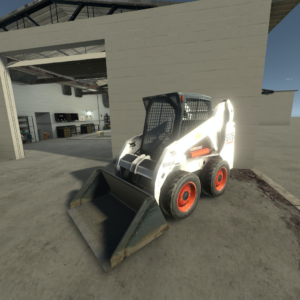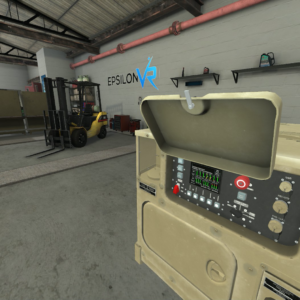Exclusive Interview with Barbara Greenstein, Senior Instructional Designer, Epsilon Systems Solutions
Dr. Saba: You have considerable experience in educational technology and instructional design. What attracted you to the field?
Ms. Greenstein: After I graduated with my bachelor’s degree in Miami, FL, I was searching for a career that would be fulfilling. I landed in the training department of a large corporation in the role of training coordinator. I quickly discovered that the training facilitators were making a difference in the employees’ lives and in the success of the business. I knew right away I needed to work take advantage of this opportunity and make this my career goal.
While working in Washington, DC for a large corporation, I had the opportunity to get my master’s degree in human resource development (HRD). This equipped me with more knowledge and skill and enabled me to thrive as an instructional designer. As my time in the learning and development field progressed, I found myself looking for new and creative ways to help employees and organizations improve. Most recently my work in emerging technologies like virtual and augmented reality allows me to help organizations achieve their goals of reducing injuries in the workplace in ways never before possible.
If my university counselor had told me that I would be making this kind of difference in people’s lives I would have jumped on the chance to be a part of it. That’s all I ever wanted – to make a difference and I get that feeling as someone every day working in this field
every day working in this field.
.
Dr. Saba: Your recent work included researching the promise of virtual reality (VR) and writing a white paper about it. What surprised you the most while researching the white paper?
Ms. Greenstein: One of the things that surprised me the most was the VR implementation process. It can be very complex and time consuming to produce VR-based training, whether you do it well or do it poorly. To produce a well-designed VR solution it is necessary to use both traditional learning design models and emerging design models. However, you must be aware that traditional design models have their limits for emerging technologies. The research in the whitepaper exposes where these limits are and how to seamlessly add a new layer that enables a complete VR design process.
For example, the need to determine all possible situations that can arise in a safety situation and share those with your learners requires extensive storyboarding. The instructional designer needs to ask questions like … What if this happened? … Then come up with several possible scenarios of what could occur and possibly several responses the learner might engage in to complete the VR successfully. What to do if someone gives an inappropriate action or response needs to be considered as well. The storyboarding approach would not be necessary for designing a traditional leader-led style course on leadership because AR/VR learning is immersive and interactive in real time.
Dr. Saba: In recent years, we have seen many technologies emerging on the scene and fading out too; some faster than the others. Is VR here to stay?
Ms. Greenstein: VR is definitely here to stay and will grow dramatically in the coming years. I remember back in 1992 videoconference systems were more than $50K per site plus the cost of operating them. At the time I worked for Electronic Data Systems (EDS). We had an elaborate Distance Learning Center (DLC) that we invested a small fortune into. With 70,000 employees worldwide at the time we were always trying to find better ways to bring skills and knowledge around the globe. The DLC allowed us to leverage a small facilitator pool and ultimately provide quality-learning programs for many employees for less money and just when they needed the information.
VR is definitely here to stay and will grow dramatically in the coming years.
How things have changed!!! We now have so much virtual type of learning happening for employees everyday. Sometimes it’s through a video conference, sometimes it’s small bursts of information through one’s cell phone delivering a micro learning, or it might be someone taking part in electronic learning (e-learning) at their own pace on their own time. And the cost of these platforms? It is insignificant compared to the value.
 VR is largely being leveraged by early adopters today, and even though the cost might be out of range for some organizations, it has gone down and will continue to go down. The technology will improve, and the benefits will be so large that it will not make sense to not take advantage of it. VR does have a specific purpose for use however, and caution should be taken not to overuse the technology for learning that is not appropriate for VR. When the learner will benefit from an immersive learning experience, such as how to perform a job safely, VR and AR definitely are the way to go. You can make a critical mistake, learn from it, and prevent that mistake from happening on the job.
VR is largely being leveraged by early adopters today, and even though the cost might be out of range for some organizations, it has gone down and will continue to go down. The technology will improve, and the benefits will be so large that it will not make sense to not take advantage of it. VR does have a specific purpose for use however, and caution should be taken not to overuse the technology for learning that is not appropriate for VR. When the learner will benefit from an immersive learning experience, such as how to perform a job safely, VR and AR definitely are the way to go. You can make a critical mistake, learn from it, and prevent that mistake from happening on the job.
VR is largely being leveraged by early adopters today, and even thought the cost might be out of range for some organizations, it has gone down and will continue to go down.
Dr. Saba: Why should instructional designers pay attention to VR?
Ms. Greenstein: There are a couple of reasons that IDs should pay attention to VR. VR is a powerful tool that immerses learners into a space that is not otherwise available or possible, a space that has safety risks, and it enables learners to practice before going live. Because of the physical nature of it, care needs to be taken to ensure the technology is not just a space to play, but that it makes a difference for learning.
VR needs to be perceived as a higher level of learning technology to be used when other learning solutions will not work well enough. We as Instructional Designers need to remember the lesson we’ve been taught by making e-learning the flavor of the month (meaning that a training solution is picked simply because every other organization is using it) and hold VR development to higher standards.
The benefit of VR for IDs is that as VR solutions grow, the demand for VR instructional designers will provide a career path that will last for decades. It is likely that the initial shortage of talented VR instructional designers will drive higher wages and career growth opportunity.
Dr. Saba: What are some of the major points that you have covered in the white paper? What should professionals expect to learn from your work?
Ms. Greenstein: Some major points we covered in the white paper are:
- The importance of using traditional design models like ADDIE and SAM when appropriate but not being afraid to layer on new technology learning models to ensure all design needs are met. And also realizing that traditional models have limits, so don’t simply rely on ADDIE and SAM.
- We differentiate between traditional training models and what they bring to the design board and new technology models and what they bring to the design board.
- Emerging technologies like augmented reality, virtual reality and the mixture of the two are here to stay. If you are an instructional designer and don’t know what these new modalities look like, it’s time to read up. They are not going away and if you want to stay current you need to start reading, researching and thinking about how your organization might make use of these technologies.
- Our main goal with the white paper was to share our trial and errors so that others can learn from our experience. We wanted to provide our use cases to show how we have experimented, failed, tried again, failed, tried again and finally succeed with great success.
- We share our enhanced storyboard for the SAM model (the secret sauce that provides the magical solution) to provide ideas of how you can design more easily for the VR learning experience. Enhancement of what we already know is the future of design. Ask the question, “How can I layer additional design requirements onto a model I already use to ensure nothing in my design is left to chance?” We provide you with the digital enhanced storyboard so you can use it as is or enhance it for your own VR needs.
Digital Media White Paper: Designing Learning for Augmented and Virtual Reality
Barbara Greenstein, Senior Instructional Designer at Epsilon Systems Solutions, Inc. is a performance improvement specialist leveraging augmented and virtual reality platforms in creative ways to improve human performance in the workplace.
Highly regarded for her instructional design and facilitation skills, with over 30 years in the learning and development field, she helps clients put the systems in place to more effectively manage in today’s changing business environment while ensuring optimal performance and job satisfaction for all employees.
Barbara received her M.A. in Human Resource Development from Marymount University, Arlington, VA. She is a Certified Performance Technologist (CPT), from ISPI. Barbara can be contacted at bgreenstein@epsilonsystems.com









